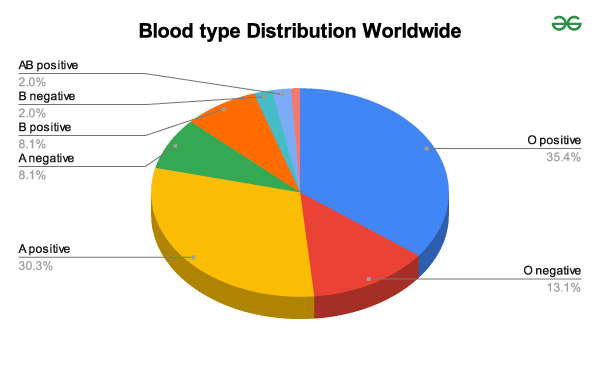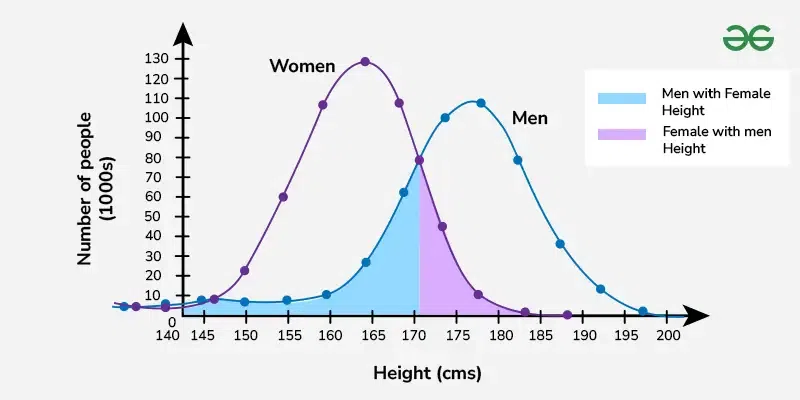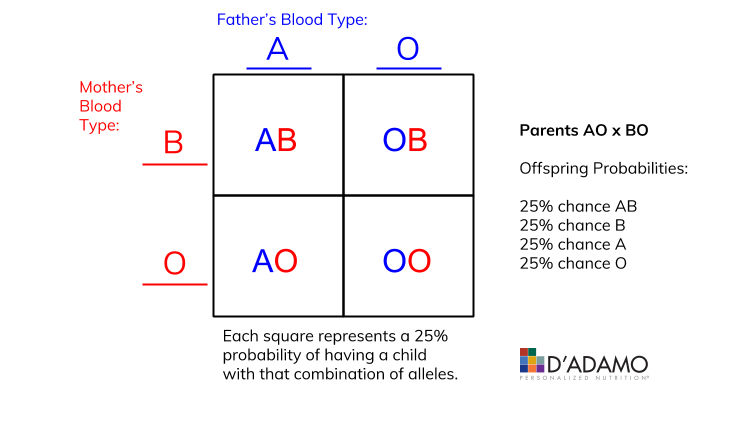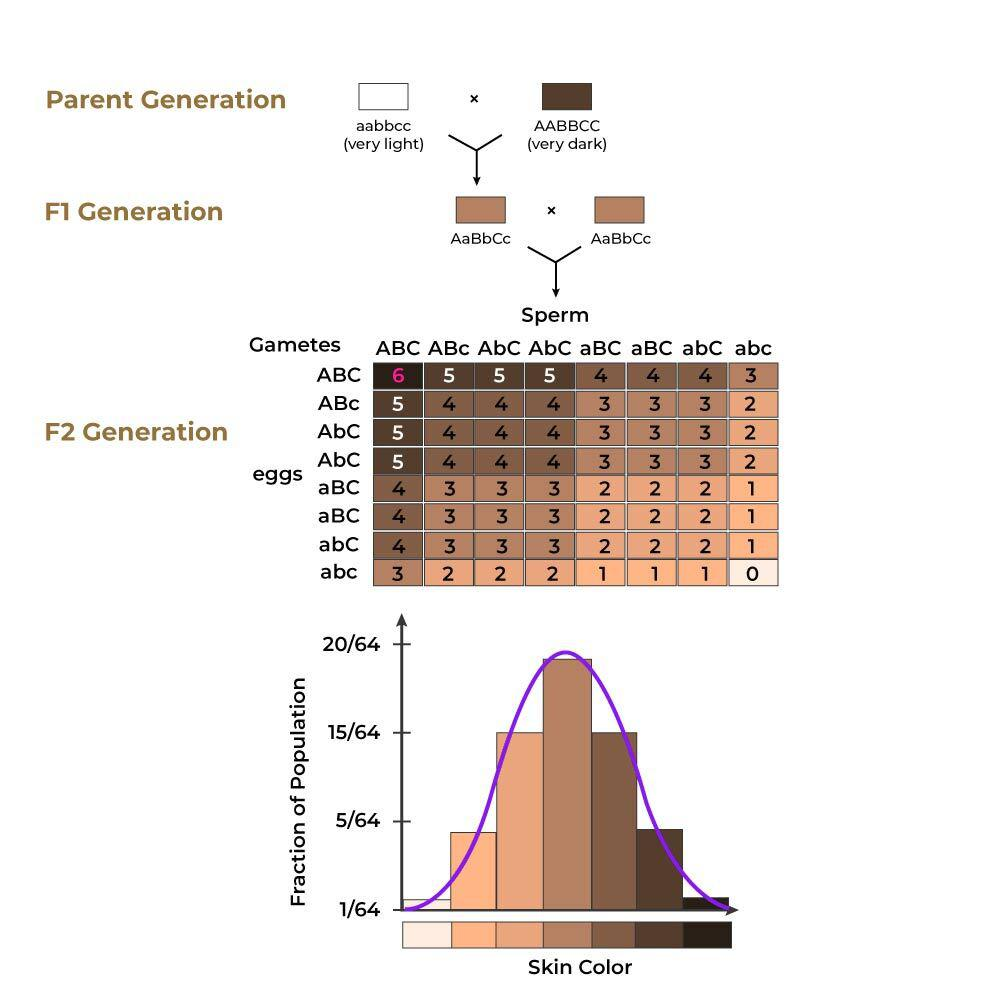17.02 Continuous and Discontinuous Variation
1. Discontinuous Variation
- Definition: Discontinuous variation refers to phenotypic differences where individuals fall into distinct, non-overlapping categories. There are no intermediate forms between these categories.
Key Characteristics:
- Distinct Categories: Traits are clearly separated without blending (e.g., blood types).
- Genetic Determination: Primarily controlled by one or a few genes with large effects.
- Minimal Environmental Influence: Phenotypes remain consistent regardless of environmental conditions.
Causes:
- Single Gene or Few Genes: Traits are determined by specific alleles at one or a few loci.
- Epistasis: Interaction between different genes at distinct loci can create distinct phenotypic categories.
Examples:
- Human Blood Groups: A, B, AB, and O types determined by the ABO gene.
- Genetic Disorders:
- Sickle Cell Anemia (HBB gene)
- Hemophilia (F8 gene)
- Plant and Animal Traits:
- Flower color in Salvia
- Stem color in tomato plants
- Feather color in chickens
Visual Representation:
- Pie Charts: The distribution of blood types in a population.

2. Continuous Variation
- Definition: Continuous variation describes phenotypic differences that fall along a spectrum, with no clear-cut categories. Traits exhibit a range of values between two extremes.
Key Characteristics:
- Spectrum of Traits: Individuals display a variety of phenotypes that blend into each other (e.g., height, weight).
- Polygenic Inheritance: Controlled by multiple genes, each contributing small, additive effects.
- Significant Environmental Influence: Environmental factors can greatly modify the phenotype.
Causes:
- Polygenes: Multiple genes located at different loci contribute to a single trait.
- Environmental Factors: Conditions such as nutrition, climate, and lifestyle impact the expression of the trait.
Examples:
- Human Traits:
- Height
- Weight
- Skin color
- Plant Traits:
- Cob length in maize (as seen in Emerson and East’s study)
- Animal Traits:
- Fur length in rabbits
Genetic Mechanisms:
- Additive Effects: Each allele at a gene locus adds to the trait in a cumulative manner.
- Example: For height, each dominant allele (A or B) might add 2 cm, while each recessive allele (a or b) adds 1 cm.
- Polygenic Interaction: Many genes interact to produce a continuous range of phenotypes.
Visual Representation:
- Bell Curves/Histograms: The smooth distribution of traits across a population (e.g., distribution of heights).

3. Genetic Basis of Variation
| Aspect | Discontinuous Variation | Continuous Variation |
|---|---|---|
| Number of Genes Involved | One or a few genes with large effects | Multiple genes (polygenic) with small, additive effects |
| Environmental Influence | Minimal to none | Significant impact |
| Phenotypic Expression | Distinct categories without intermediates | A continuous range of phenotypes |
| Examples | Blood groups, certain genetic disorders, specific flower colors | Height, weight, skin color, maize cob length |
| Genetic Mechanisms | Single gene loci, epistasis | Polygenic inheritance, additive gene effects |
4. Genetic Mechanisms in Detail
Discontinuous Variation:
- Single Gene Locus:
- Example: ABO Blood Group
- Alleles: IA, IB, IO
- Genotypes and Phenotypes:
- IAIA or IAIO → Type A
- IBIB or IBIO → Type B
- IAIB → Type AB
- IOIO → Type O
- Example: ABO Blood Group
- Epistasis:
- Interaction between genes can create distinct phenotypic outcomes.
- Example: One gene may mask or modify the expression of another, leading to clear categories.
Continuous Variation:
- Polygenic Inheritance:
- Definition: Traits are influenced by multiple genes, each contributing a small effect.
- Example: Human height is influenced by numerous genes, each adding a small amount to the overall height.
- Additive Effects:
- Each allele’s effect accumulates to produce the final phenotype.
- Hypothetical Example:
- Gene A: A (adds 2 cm), a (adds 1 cm)
- Gene B: B (adds 2 cm), b (adds 1 cm)
- Genotypes:
- AABB → 8 cm
- AAbb or aaBB → 6 cm
- aabb → 4 cm
- Result: A range of heights from 4 cm to 8 cm, with intermediates.
Polygenes:
- Definition: Several genes at different loci contribute to a single trait.
- Example: Maize Cob Length
- Case Study: Emerson and East’s experiment showed that crossing two homozygous maize varieties resulted in F1 with uniform cob length, while F2 displayed a normal distribution due to polygenic inheritance.
5. Case Study: Continuous Variation in Maize Cob Length
Experiment by Emerson and East:
- Parental Generation:
- Black Mexican and Tom Thumb maize varieties were homozygous at most loci.
- F1 Generation:
- Crossed to produce offspring with uniform cob lengths due to genetic recombination.
- F2 Generation:
- Displayed a normal distribution of cob lengths, illustrating polygenic inheritance.
Analysis:
- F1 Generation: Limited variation as parental traits were homozygous.
- F2 Generation: Increased variation due to multiple genes segregating and recombining, alongside possible environmental influences.
6. Analyzing Variation
Statistical Tests:
- t-test:
- Purpose: Compare the means of traits between different populations.
- Application: Determines if observed differences are statistically significant or due to random chance.
- Reference: Detailed in Chapter P2 for comprehensive understanding.
7. Key Terms
- Genetic Variation: Differences in DNA sequences among individuals within a species.
- Phenotypic Variation: Observable differences in traits among individuals of a species.
- Discontinuous Variation: Traits with distinct categories and no intermediates (e.g., blood types).
- Continuous Variation: Traits that exhibit a range of values without clear categories (e.g., height, weight).
- Epistasis: Interaction between genes at different loci that affects a single trait.
- Polygenes: Multiple genes at different loci that collectively contribute to a single phenotype.
8. Visual Representations
Diagram Suggestions:
- Punnett Squares:
- Single-gene inheritance (e.g., ABO blood groups).

- Polygenic Trait Models:
- Multiple genes contributing to a single trait with additive effects.

9. Discussion Questions
- Explain the difference between continuous and discontinuous variation with examples.
- Continuous variation involves traits that show a range of values (e.g., height), while discontinuous variation involves traits that fall into distinct categories without intermediates (e.g., blood types).
- How does polygenic inheritance contribute to continuous variation?
- Multiple genes, each with small additive effects, combine to produce a wide range of phenotypes, resulting in continuous variation.
- Why is environmental influence more significant in continuous variation compared to discontinuous variation?
- Continuous traits are influenced by multiple genes and environmental factors, allowing for a spectrum of phenotypes, whereas discontinuous traits are primarily controlled by specific genes with little to no environmental impact.
- Describe how epistasis can result in discontinuous variation.
- Epistasis involves interactions between different genes, where one gene can mask or modify the expression of another, leading to distinct phenotypic categories.
- Using the case study of maize cob length, explain how polygenic inheritance can produce a normal distribution of traits in the F2 generation.
- In the F2 generation, multiple genes segregate and recombine, each contributing small effects to cob length. The cumulative effect of these polygenes results in a continuous range of cob lengths, forming a normal distribution.